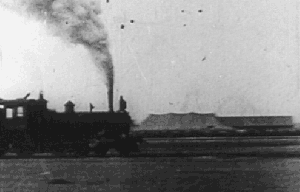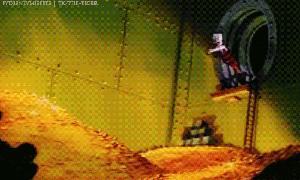
 The Last Colony and Zoë’s Tale by John Scalzi
The Last Colony and Zoë’s Tale by John Scalzi
In Old Man’s War, John Scalzi brought us a new future, vast in scope, amazingly advanced and yet horribly familiar at the same time. Humans have spread out through space, snatching up habitable planets as fast as they can and setting up new colonies to thrive or perish. Back on Earth, most of the population is fed just enough information about the greater universe to ensure a steady supply of colonists and soldiers, but not enough to make them aware of all the cool stuff they’re missing.

HELLO NEIGHBOR! DO YOU HAVE A CUP OF YOUR CHILDREN’S BLOO – SUGAR! SUGAR WE COULD BORROW?
Unfortunately, we are not the only ones out there who want this real estate. Dozens of alien species are out there, and most of them want the same worlds that we do. We – and they – will fight tooth and nail to get and keep the precious few worlds that will support life. Existence out in space is much like existence on Earth – a constant struggle for scarce resources, and the species who is best adapted to get and keep planets will be the one that, for lack of a better word, wins.
To keep human colonists alive, the Colonial Union has created the Colonial Defense Force. These soldiers, taken from senior citizens of Earth, are given new, superhuman bodies, terrifyingly effective weapons, and just enough training to make sure they can defeat the horrifying things that they are sure to face. John Perry, a widower from Earth, joins the CDF and becomes one of the few Earthlings to learn about the wider universe into which humanity has spread. Sarcastic and quick-witted, Perry learns a lot more than he bargained for – among other things, that his dead wife’s DNA had been used to make the Special Forces soldier called Jane Sagan.
In The Ghost Brigades, we follow Sagan through the shadowy and violent world of the Special Forces. Where the regular CDF soldiers have bodies that would make them superheroes on Earth, the special forces are on a whole other level. Grown from the DNA of people who did not survive to become CDF soldiers, the special forces are where the newest and most interesting genetic modifications are tried out. Better vision, faster reflexes, a nearly telepathic connection with their squadmates, and even in some cases whole new body plans are all options for the Special Forces soldier. They are single-minded, deadly, and proud, knowing their purpose in the universe almost from the moment of their “birth.” What they lack, however, is the years of living that ordinary humans have and all that comes with that. This makes the Special Forces even more separate from the rest of the CDF – human, but not quite, yet essential to the survival of humanity.
Jane Sagan is one of the people trying to find Charles Boutin, a brilliant scientist who has vanished, taking a dangerous amount of information on the CDF’s mind transference process with him. Their worst fear – that Boutin will try to sell that technology to their enemies – isn’t even close to how bad the truth is. Boutin hates the Colonial Union with a passion and devises a plan that will make all human colonies everywhere completely vulnerable to attack. When he dies, the only thing Jane and her squad can do is escape, but not before saving Boutin’s young daughter, Zoë, from the terrifying Obin. More on them later, though.

It’s… It’s a space thing.
Their days of adventuring over, Perry and Sagan marry, creating a partnership that sounds impossible, if you stop to think about it for too long – a man well into his 80s, with the body of a 30-year-old, marrying a woman cloned from the DNA of his former wife, and who is technically still too young to get a driver’s license. They love each other, though, and are willing to bring Zoë into their family. Following their discharge from the CDF, they got new, normal bodies and accepted a position on the oddly-named colony world of Huckleberry. In the town of New Goa, John is the ombudsman, which means having to deal with all the petty problems that come with a small town, and Jane is the constable. They live with Zoë and her two Obin bodyguards in what could certainly be considered a good life.
So you know that won’t last.
They are tapped to lead a new colony – a new type of colony, actually. Whereas previous colonists had all come from Earth, the new colony of Roanoke will be founded by representatives from ten of the oldest human colonies. It’s a second generation colonization, which would be a fantastic milestone if it weren’t for one tiny little detail: the Conclave.
Having been willing to fight pretty much everyone in their area of space, the Colonial Union hasn’t made many friends. In fact, they have damn few. Their enemies, sensing a common threat, have banded together into an organization called The Conclave, which is working to end interplanetary war through a representative government of sorts. One of their first acts was to forbid colonization by any non-Conclave members. Unauthorized colonies that resist the Conclave are vaporized.
Humanity, always the contrarians, wants to flout the Conclave’s rule and undermine its presumed authority. Thus begins an intricate web of deception and misinformation and scheming that all centers around the colonists at Roanoke, who know nothing of what’s going on over their heads. There are a few clues, though, and when John starts pulling at loose threads, a whole tapestry of intrigue is revealed to him. Roanoke may be vital to the survival of humans in space, but that doesn’t mean that the colony itself has to survive.
The reason I’m putting these two books together is because they’re really one book. The Last Colony is a fantastic read, where every time the plot turns it’s like a punch in the gut. The tension never really lets up, and every time we think things are going to get better, that’s the cue for them to get a whole lot worse.

Taking narrative shortcuts makes the Baby Jesus cry, Johnny!!
After finishing the book, however, Scalzi got a light wrist-slapping by his readers for taking a few shortcuts. One is that an indigenous, intelligent life form is discovered on Roanoke, which cause the deaths of several colonists… and then they vanish, never to be seen again. From the description, they sounded pretty cool, and I was disappointed that Scalzi had just let them kind of drift away so quietly. The other problem was with Zoë – Perry comes up with an interesting end-run around the Colonial Union, one which involves Zoë pulling rank with the Obin, who revere her as the daughter of the man who gave them consciousness. She gets sent off with her Obin bodyguards, partly to get help and also to get her out of harm’s way, and returns twenty pages later with a piece of alien technology that just happens to be exactly what they need to win the final, climactic confrontation against the Conclave. The author knew he couldn’t put all that into the book without producing something of doorstop proportions, so he “did a little hand waving and hoped [he] wouldn’t get caught.”
This is what you get for cultivating an intelligent readership, Scalzi.
The other reason for writing Zoë’s Tale, of course, was that Zoë was a really interesting character. The daughter of a man who would have betrayed humanity, and at the same time brought consciousness to the Obin – a species that had been uplifted long ago to have intelligence without consciousness. The Obin revere Zoë, and would do anything to protect her. Under these circumstances you might think that she would grow up kind of weird, but she actually ends up pretty cool. We get to see her in action a few times during The Last Colony, and those few times are more than enough to make you want to read a whole book about her.
That book, then, is Zoë’s Tale, a re-telling of the events of The Last Colony from the perspective of the most important teenage girl in the known universe.

This is what I imagine being a teenage girl is like. How’d I do?
It’s hard enough being a teenage girl here and now (or so I’m told), so imagine how much harder it must be when your father is one of the greatest traitors to humanity; when your adoptive parents are ex-soldiers, and your mother is technically younger than you are; when an entire species depends on you as a model of what it means to be a conscious, self-aware being; and when you suddenly have to leave your home to start a new colony on a world that no one has ever heard of.
That would be enough to mess anyone up.
Fortunately, Zoë is a tough girl. She’s bright, resilient and sarcastic. She enjoys a deep inner life, knows how to taunt boys, and keeps her head in a crisis. In short, the kind of teenage daughter we would all want to have, if we wanted to have teenage daughters. She and her friends do what teenagers do best: push the boundaries of their new home, have fights, fall in love, and feel big feelings about everything. Through her, we learn a lot more about the indigenous life forms of Roanoke, and we find out much more about the universe at large when she is sent to find a way to save her family and friends.
While Zoë’s Tale was very enjoyable, I find it hard to evaluate fairly. I love Zoë, and her friends are great characters as well. Scalzi does a fantastic job at writing the intricate webs of angst that make up our teenage years, fraught with emotional land mines and exciting new feelings. Her relationship with her boyfriend Enzo is very well handled, as is the ever-shifting dynamic of friendship between her and the other teens of the colony. There are some beautiful, raw moments of emotion in the book that made me – the man whose heart was long ago replaced by a spinning, cold lump of stone – stop for a moment and say, “Wow.”
What I can’t fairly say is whether or not Zoë’s Tale works as a stand-alone book. As I read it, I was constantly filling in gaps from my knowledge of The Last Colony, which made everything make sense. If I had my way, I would wipe my memory of both books and then read them again in reverse order to see if they still worked. Perhaps one day, if Scalzi has a lot of free time, he will integrate the two into a larger single volume. I wouldn’t envy him that work, but I think the resulting book would be a brilliant read.
One of the things I like about the work of John Scalzi is that I can always recommend him without reservation, so I’m doing that now. If you like good science fiction, an engaging plot and wonderful characters, pick up The Last Colony and Zoë’s Tale. You won’t regret it.
—————————————————-
“Being from Earth in this universe is like being a small-town kid who gets on the bus, goes to the big city and spends his entire afternoon gawking at all the tall buildings. Then he gets mugged for the crime of marveling at this strange new world, which has such things in it, because the things in it don’t have much time or sympathy for the new kid in town, and they’re happy to kill him for what he’s got in his suitcase.”
– John Scalzi, The Last Colony
“You and I are so totally going to be best friends.”
“Are we? I don’t know. What are the hours?”
“The hours are terrible. And the pay is even worse.”
“Will I be treated horribly?”
“You will cry yourself to sleep on a nightly basis.”
“Fed crusts?”
“Of course not. We feed the crusts to the dogs.”
“Oh, very nice. Okay, you pass. We can be best friends.”
“Good. Another life decision taken care of.”
“Yes. Now, come on. No point wasting all this attitude on ourselves. Let’s go find something to point and laugh at.”
– Zoë and Gretchen, Zoë’s Tale
—————————————————–
John Scalzi on Wikipedia
The Last Colony on Wikipedia
Zoe’s Tale on Wikipedia
The Last Colony on Amazon.com
Zoe’s Tale on Amazon.com
John Scalzi’s blog
 The Diamond Age by Neal Stephenson
The Diamond Age by Neal Stephenson













































